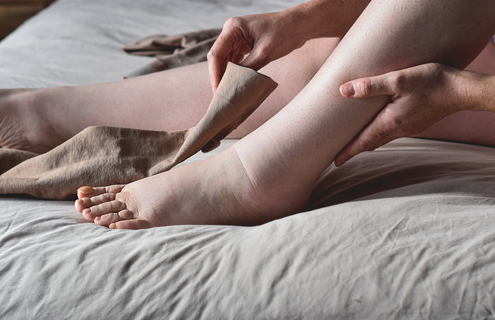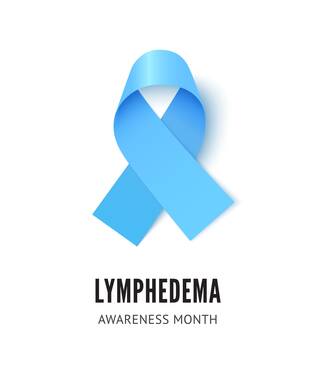
March 6 is World Lymphedema Day, a day to promote the awareness of lymphedema. From primary care to physical therapy and occupational therapy to Integrative Medicine, APD providers offer support and treatment to those living with lymphedema. Nicole Cunningham, OT/L, CLT shares five things you should know about the long-term condition.
What is lymphedema?
Lymphedema refers to tissue swelling caused by an accumulation of protein-rich fluid that’s usually drained through the body’s lymphatic system.
“It is accumulated fluid/swelling that remains beyond what would normally be expected following trauma, infection, or surgery,” Cunningham said.
It most commonly affects the arms or legs, but can also occur in the chest wall, abdomen, and neck.
Who gets lymphedema?
According to the Lymphatic Education & Research Network, up to 10 million Americans suffer from lymphedema and lymphatic diseases.
Lymphedema can be either primary, meaning it occurs on its own, or it can secondary, which means it is being caused by another disease or condition. Secondary lymphedema, affecting 1 in 1,000 Americans, is a lot more common than primary.
How does lymphedema start?
The lymphatic system is a network of channels and glands throughout the body that helps fight infection and remove excess fluid.
Lymphedema develops when the lymphatic system does not work properly.
“You can be born with malformed lymphatic vessels or an irregularity/abnormality of the lymphatic system. Some people are affected at times of change hormonally, such as puberty, pregnancy, or menopause,” Cunningham said. “You can develop a lymphedema following a surgery of any kind, but especially when surgery removes one or more lymph nodes, such as in the case of cancer. Some people also develop lymphedema after an infection, like cellulitis.”
What are the symptoms of lymphedema?
Lymphedema signs and symptoms include:
- Swelling of part or all of the arm or leg, including fingers or toes
- A feeling of heaviness or tightness
- Restricted range of motion
- Recurring infections
- Hardening and thickening of the skin (fibrosis)
What is it like living with lymphedema?
Lymphedema increases risk of infection and can result in significant skin changes.
“In addition, the increased weight and girth can make it difficult to find clothing and shoes that fit, move your body and be active and social, and can impact your quality of life,” Cunningham said.
“Lymphedema is a lifelong condition, and there is no cure. But we have a better awareness of lymphedema now and there are ways you can manage it. Seeing a lymphedema therapist can help a person learn techniques to self-manage the swelling, care for the skin, and know and mitigate the risks of the condition.”
Patients with lymphedema should look for an occupational therapist with Complex Lymphatic Therapy (CLT) certification, like Nicole Cunningham at APD. Learn more.
